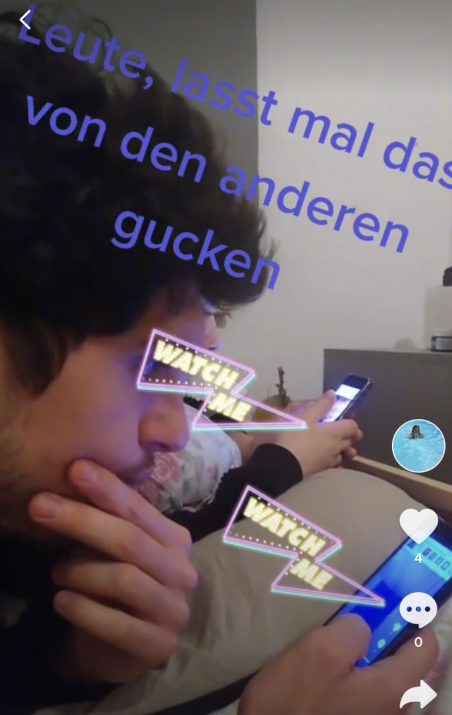Copyright: F.ART Kollektiv
#onethumbedbandit – Performative Collections on TikTok
Research Project by Sebastian Matthias
TikTok is a rapidly growing online community of immense size that uses dance and other performance practices as its medium. To make transparent some of the cultural transformations that occur within the production, reception and organisation of TikTok dances, the project #onethumbedbandit assembled a Performative Collection of TikTok videos: From an understanding derived from watching and making videos, a heterogenous group of co-researchers created artistic responses to specific performative strategies from each of their (artistic) perspectives. Together, the Performative Collection of videos highlights, counters, amplifies and subverts the underlying imperatives of surveillance capitalism that format the performance of TikTok. Not unlike the slot machine, the ‘One-Armed Bandit’, the app tries to hook on to human weaknesses or physiological mechanisms to manipulate perception and keep users on the platform. How can this bandit be disarmed? Understanding what is at stake not only for the performing arts, might provide some insight into the challenges of digital culture.
Each response that is produced as part of the collection will offer a starting point to pinpoint how dancing online and watching dance online has become a powerful tool to construct realities. As part of the research project Participatory Art Based Research in collaboration with HCU Hamburg and FUNDUS THEATER/ Theatre of Research, the project inquires into the formats Performative Collection, Intervention into the Real as well as Creating a Media Device.
Researcher: Sebastian Matthias
Co-Researchers: Jamie Allen, Israel Aloni, Rachell Bo Clark, Leonard Engel, Moritz Frischkorn, Masaru Iwai, Sergiu Matis, Mila Pavicevic, Marie Zvosec, and the students of Performance Studies at the University of Hamburg.
Participants: Students of Winterhuder Reformschule and participants of the Tanzpakt Academy Dresden. With many thanks to Rene Alejandro Huari Mateus for his contributions


